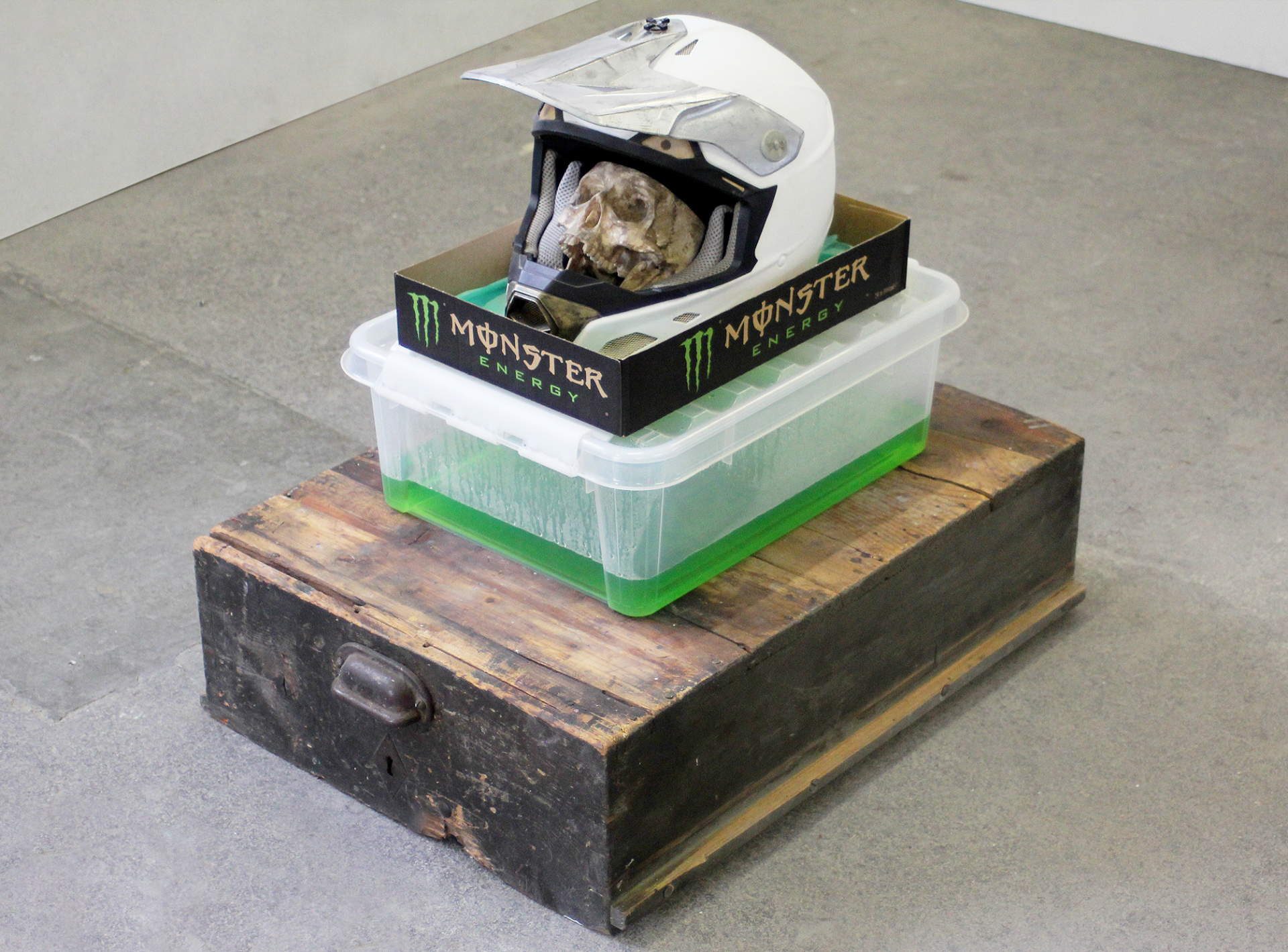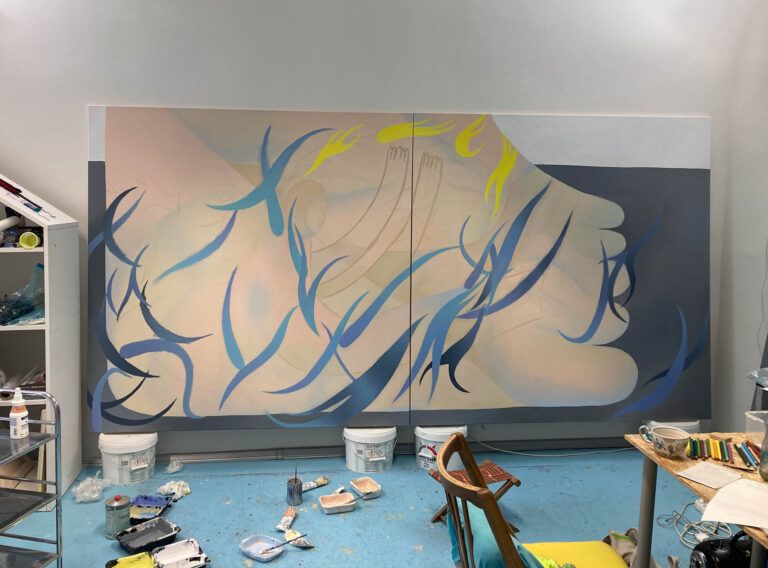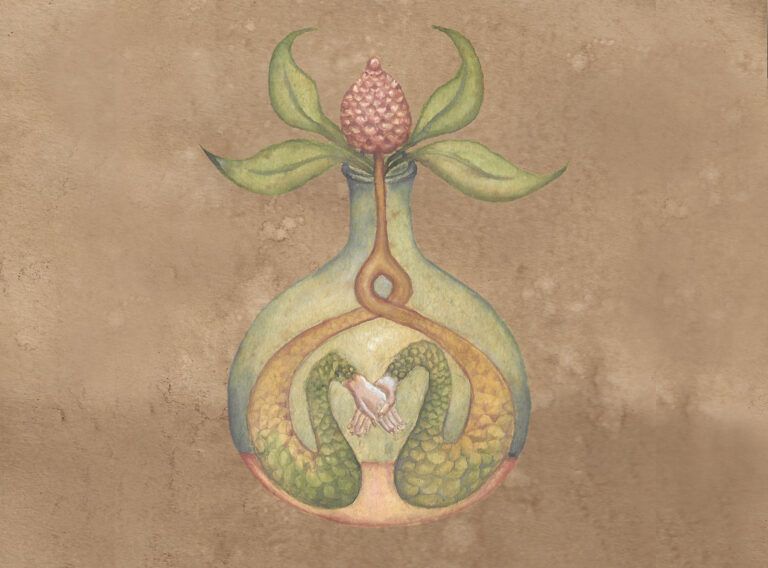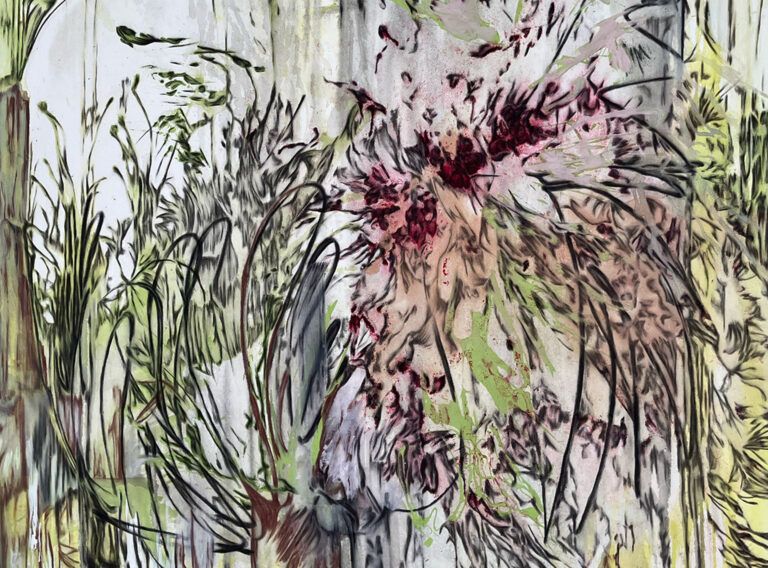What are your current and future plans regarding art?
I’m currently working on several projects at the same time. I’m still working on my film “Hail Tetrapoda and All Plates” and another film I‘m currently shooting, combined with scenes from previous projects. I’ve started a series of wooden structures containing different objects and images. And I’m working on a lot of different small pieces without really knowing where it goes at the moment, but this is how I like to work.





How did you reach the current form of your original aesthetic?
The choice is very intuitive, I have a lot of objects I’ve found or made all around my studio. I just play with all those forms, combine them and try different compositions. I work on my videos the same way, I have a lot of different images that come to mind. I don’t really think of a specific aesthetic, it just comes with the material I have in hand. Most of the time, the components with which I work already have a history via what they’ve been through but also in what they represent. Some objects can be 90s toys and some can be Gulf War images but that’s the contrast I like to work with, the opposition of elements that have nothing in common. Sometimes, the combinations I make can look very random but when you look closely, it makes sense. An intuitive work is not necessarily innocent, it represents a deeper idea.


Do you build your artworks around a main theme?
I guess there is no general theme in my work (or maybe I don’t see it for now) and there is no specific technique I work with. I like to work on the connections I can make between different fields of culture (mass-produced culture, scientific culture…) but I don’t really consider it a theme but more as a tool to work with. The techniques and media that I use are always specific to the project I think about, my work is multidisciplinary not just in technique but also in the way I think of my work as a whole unit.



Is your hometown reflected in your work?
I was born, live and work in an industrial city, and my studio is located in an old fabric factory where my grandmother used to work. There are some abandoned buildings where I walk sometimes to find materials for my work. I’ve been thinking of doing a project about this place and my grandmother, we’ll see.



Do you or your work have some sports background?
I used some motocross elements for my works a few times, objects I owned or found. My work doesn’t really have a direct connection to sport but by taking the motocross perspective, I like to make connections with knights. Both share a relation to ritualistic and risk-taking behaviors. I like to think of a romantic analogy between extreme sports and chivalry codes, which leads to a modern adaptation of romanticism.
BIO / Neckar Doll was born in 1995 in France.
Educational background /
BA at HEAR – Hautes Écoles des Arts du Rhin, Mulhouse, France 2017
MA at HEAR – Hautes Écoles des Arts du Rhin, Mulhouse, France 2019
Doll’s research focuses on the capacity of cultures to play with transmissions: transmissions of vulgarisation, those between fictions initially foreign to each other, between different worlds, the anarchic transmission between the so-called high culture and popular culture. The images he usually chooses to work with belong to different registers and no hierarchical distinctions are applied to the choice of these images. He likes to work with found objects, objects he has made, through reappropriation he plays with these elements and puts them in a new story, reinventing relational from one image to another. The final results can be seen in installations and videos where these elements are used as props.




